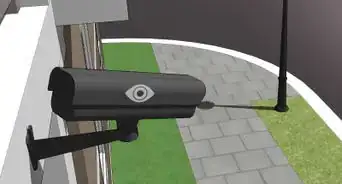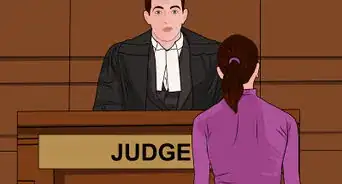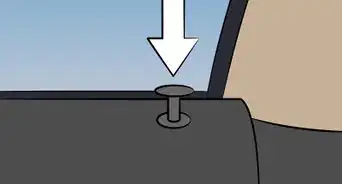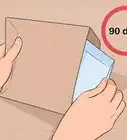This article was written by Jennifer Mueller, JD. Jennifer Mueller is an in-house legal expert at wikiHow. Jennifer reviews, fact-checks, and evaluates wikiHow's legal content to ensure thoroughness and accuracy. She received her JD from Indiana University Maurer School of Law in 2006.
There are 7 references cited in this article, which can be found at the bottom of the page.
This article has been viewed 135,890 times.
Most states have laws that govern how dark you can tint the windows on your car. Some also place limitations on the type of tint used, and where or how the tint can be placed. If your windows are tinted darker than allowed by state law, you may get pulled over and cited for a window tint violation. If you know your tint is in violation of the law, the easiest way to get out of the ticket is to remove your tint. You can plead not guilty and fight the ticket if your tint is actually in compliance with state law, although this may end up costing more than it's worth.[1]
Steps
Fixing the Problem
-
1Consult a traffic law attorney. In most states, if you fix the problem for which you got the ticket, the judge will dismiss the ticket. However, you may want to talk to an attorney near you who specializes in traffic violations to make sure this will happen in your case.[2]
- Search online for your state's bar association. Most have online referral services that will match you with licensed attorneys in your area who take cases like yours.
- Most traffic attorneys offer a free initial consultation, so you should be able to find out the information you need without having to pay any legal fees. If you do have to pay for the initial consultation, it will typically be around $30 to $50.
-
2Photograph your car after the tint is removed. If you want to remove the tint on your own and don't care about having it replaced, photos can be used in court to prove to the judge that you removed it.[3]
- Get your whole car in the frame, and try to get your license tag in at least one photo. This shows that the car in the photo is the one that was pulled over.
- If you want to make close-ups do those in addition to the photos showing the whole car.
- Print your photos after you've taken them so you can submit them to the court as evidence. Most judges won't accept digital photos on a camera or phone. Your prints don't have to be large, but should be big enough that necessary details (such as your license plate number) can be seen clearly and easily.
Advertisement -
3Take your car to a tint shop. If you still want tinted windows, you may want to have a tinting specialist remove the old tint and replace it with a tint that meets the legal requirements in your state.[4]
- Legitimate tint shops typically don't stock tint that is illegal in your state. If you talk to a tint specialist, they can evaluate your car and recommend how to best fix the problem that will still meet your basic needs.
- Most tint shops have a card that can be pressed against the inside of the window. If you can read the text on the card through the window, the tint meets legal requirements. Hold the card up to each window and take a photo.
-
4Save your receipt from the tint shop. If you get your tint removed or replaced by a tinting specialist, the receipt serves as proof that you fixed the problem. It also shows the judge when you completed the transaction.[5]
- Make a couple of copies of the receipt so you can distribute them if a hearing is necessary.
-
5Complete an affidavit if required. Some states only dismiss "fix-it" tickets if you remedy the problem within a short period of time after you got the ticket. The affidavit provides the judge with proof that you fixed your tint within the specified time frame.[6]
- Your state or county may have a form to use for this affidavit. Generally, the affidavit should include a statement that the person removed the tint from your windows, or inspected your car after the tint was removed and found that it was in compliance with the law.
- This affidavit must be completed by the mechanic or tint specialist who removed your tint. If you removed your tint on your own, take it to the police station and get an officer to inspect it and fill out an affidavit for you.
-
6Submit your documentation to the court. In many courts, you can have a window tint ticket dismissed by submitting proof that you fixed your tint by the deadline stated on the ticket. Check your ticket for instructions on how to submit this information.[7]
- If you're trying to beat the ticket this way, get your tint fixed as soon as possible. If you don't submit proof before the deadline listed on your ticket, you may still have to pay the fine. The deadline typically will be fewer than 30 days but may be as short as 2 weeks.
-
7Attend your hearing if required. Some states require you to present your proof in traffic court. Traffic court typically is held in the evening, and many people are there to respond to citations. When your name is called, move to the front of the courtroom and present your documentation.[8]
- If you have sufficient proof that your window tint was either removed or replaced with tint that complies with the state's law, your ticket will be dismissed.
- You may have to pay a small fee, typically under $100, to cover time and court costs.
Requesting an Exemption
-
1Contact your local DMV office. Many states have carved out exemptions to their window-tinting laws for people who have a medical or vision-related condition that requires them to limit their exposure to the sun. Examples of conditions typically covered include lupus, melanoma, and severe photosensitivity.[9]
- Your exemption may not be processed within the deadline on your ticket, which is typically less than 30 days. You may want to talk to an attorney to explore your options for having the ticket postponed until the exemption application process is complete.
- Staff at your local DMV will be able to explain what exemptions are available in your state or point you to the correct statute or regulation.
- You also may be able to find out this information on your own by going to the website for your state's DMV. Make sure you're on an official government site (typically ending in .gov) so you know the information you're getting is accurate.
-
2Get an application for an exemption. Each state has its own application form you need to fill out to request an exemption from the window tint law. This form requires information about you, your vehicle, the tint on your vehicle, and the reason you want an exemption.[10]
- You should be able to get this form at your local DMV. Many states also make the form available for download online.
-
3Take the application to your health care provider. In addition to the information provided by you, the exemption application requires a health care provider identify your medical condition and certify that you need tint in excess of state legal limits because of that medical condition.[11]
- Your health care provider may be required to examine you before completing the form. You may need to provide additional information about this examination, such as what sort of tests were completed.
- If your doctor recently diagnosed you, they usually don't need to re-examine you. Instead, they would describe the previous diagnosis process.
-
4Submit your application to the appropriate office. The application typically includes information on where to send it once completed. Most states have a central medical review unit that evaluates all applications for exceptions. Provided everything is in order, they'll send you an exemption permit in the mail.[12]
- There usually isn't a fee charged for medical exemptions. If your state does charge a processing fee, the amount will be listed on the application.
- Make a copy of the application before you send it, so you have a copy for your records. You may want to carry a copy in your car as well, in case you get pulled over again before your permit is issued. While processing times may vary, allow at least 2 weeks for your application to be received and reviewed.
-
5Show your permit to the court. Once you have your permit for an exception, you can show it to the judge to get your window tint ticket dismissed. If you don't get your permit before the deadline listed on your citation, you may be able to submit your application for the exception to the court. [13]
- The judge may postpone hearing on your citation to wait and see if your permit will be issued.
-
6Carry your permit in your vehicle at all times. Once you get your exception permit, keep it in your glove compartment with your car registration and proof of insurance. If you get pulled over again, you can show this permit to the officer.[14]
- The permit typically applies to a specific vehicle rather than a person. This means if you get a new car, you may have to get a separate permit for that car.
- In NYS, the DMV provides a sticker (MV-80W.2) that needs to be applied to the center top of any window except the windshield. There is actually no other document that you can keep in the glove compartment.
Pleading Not Guilty
-
1Consult a traffic law attorney. If you believe your tint was actually within the bounds of the law and the officer was in error, an attorney can help you. An attorney with experience fighting window tint tickets probably knows things about the way the law works that you don't.[15]
- Most traffic law attorneys provide free initial consultations. Use that opportunity to talk to several attorneys so you can choose the best one.
- Ask attorneys you interview what their success rate is in fighting cases similar to yours. You also want to find out what kind of fees they charge.
- If you're talking to an experienced attorney, find out how involved they will be in your case. More experienced traffic law attorneys typically field out a case for a minor infraction to a more junior attorney. You should at least be able to meet and talk to the person who will actually be working with you before you decide to hire that attorney.
-
2Follow the instructions on the citation to plead not guilty. Your traffic ticket may have detailed instructions you must follow to plead not guilty, or it may refer you to a website. Take note of any dates and make sure you enter your plea before the deadline, which is typically less than 30 days.[16]
- Some states or counties may require you to pay all or part of the fine assessed before your hearing. If you're found not guilty at your hearing, your money will be refunded.
-
3Have your tint inspected. At your hearing, you need evidence that your tint is within the bounds of the law. The easiest way to do this is to take your car to a state inspector, or to a police station or other tint specialist.[17]
- The person who inspects your tint should write a brief affidavit stating that they inspected your tint and found it met the requirements of the law. The affidavit should also explain how they inspected the tint and what authority they have to complete such an inspection.
- Some states only allow inspections and certification of tint from specific individuals, such as licensed state inspectors or police officers. Check your state's window tinting law to find out, or ask a traffic law attorney.
- If possible, take photos as the person is inspecting your tint. You can print those and use them as evidence at your hearing, along with the affidavit. Try to get your license plate in at least one photo, so you can prove it is the same car as the one that was ticketed.
-
4Gather evidence to support your claims. When you go before a judge, it's not enough to state that your tint doesn't violate the law – you have to prove it. Along with an inspection and photos, other documentation related to your tint may help prove your innocence.[18]
- For example, if you still have the receipt from when you had the tint installed, it may list the type of tint used. That could be used as evidence that the tint did not violate the law.
- You might also back your argument with statements from the person who installed the tint that it was in compliance with state law.
-
5Attend your hearing. Depending on where you live, you may have a formal hearing before a judge or a more informal meeting with the prosecutor assigned to your case. Regardless of the format of the hearing, treat it seriously and treat everyone involved with respect.[19]
- Arrive at the courthouse at least 30 minutes before the time your hearing is scheduled, so you have enough time to get through security and find the right courtroom.
- If you've hired an attorney, they may want to meet you somewhere so the two of you can travel to the courthouse together.
-
6Present your case to the judge. If you haven't hired an attorney, you'll be responsible for outlining your defense to the judge and entering the evidence you've brought. Speak in a loud and clear voice, and treat all court personnel with respect.[20]
- Make copies of documents you want to present as evidence so you can pass copies to the judge and prosecutor and also keep one for yourself.
- If you provide sufficient evidence that your tint does indeed comply with state law, and the officer was mistaken in pulling you over, your ticket will be dismissed.
References
- ↑ http://traffic.findlaw.com/traffic-tickets/window-tint-laws-the-basics.html
- ↑ http://www.courts.ca.gov/9529.htm
- ↑ http://www.courts.ca.gov/9529.htm
- ↑ http://www.courts.ca.gov/9529.htm
- ↑ http://www.courts.ca.gov/9529.htm
- ↑ http://suffolkcountyny.gov/tpva/movingviolations.aspx
- ↑ http://suffolkcountyny.gov/tpva/movingviolations.aspx
- ↑ http://suffolkcountyny.gov/tpva/movingviolations.aspx
- ↑ http://traffic.findlaw.com/traffic-tickets/window-tint-laws-the-basics.html
- ↑ https://dmv.ny.gov/forms/mv80w.pdf
- ↑ https://dmv.ny.gov/forms/mv80w.pdf
- ↑ https://dmv.ny.gov/forms/mv80w.pdf
- ↑ https://www.ncleg.net/gascripts/statutes/statutelookup.pl?statute=20-127
- ↑ https://www.ncleg.net/gascripts/statutes/statutelookup.pl?statute=20-127
- ↑ https://www.greghillassociates.com/what-are-illegal-tinted-windows-vehicle-code-26708-5.html
- ↑ http://suffolkcountyny.gov/tpva/movingviolations.aspx
- ↑ http://legislature.maine.gov/statutes/29-A/title29-Asec1916.html
- ↑ https://www.greghillassociates.com/what-are-illegal-tinted-windows-vehicle-code-26708-5.html
- ↑ http://suffolkcountyny.gov/tpva/movingviolations.aspx
- ↑ http://suffolkcountyny.gov/tpva/movingviolations.aspx
About This Article
If you want to beat a window tint ticket, try going to the tint shop to fix the problem. For example, in many states, if you remove the tint or replace it with a shade that is legal, the judge will throw out the ticket. To do this, you’ll have to have pictures of your car after the changes are made, as well as any documents that prove the tint was changed, like a receipt from an auto body shop, and submit them to the court. If you have a medical condition that requires you to have tinted windows, you might be able to get an exemption from window tint laws. Getting this exemption requires you to fill out an application, which can be found at the DMV, and have it certified by your healthcare provider. For more tips from our legal co-author, like how to plead not guilty to a window tint ticket, scroll down.

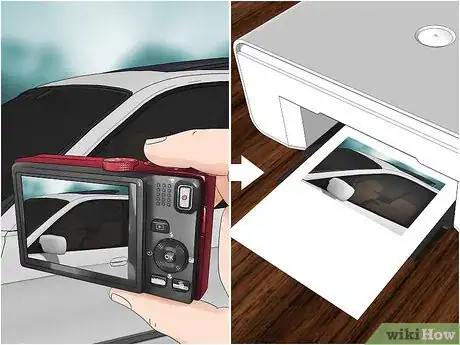
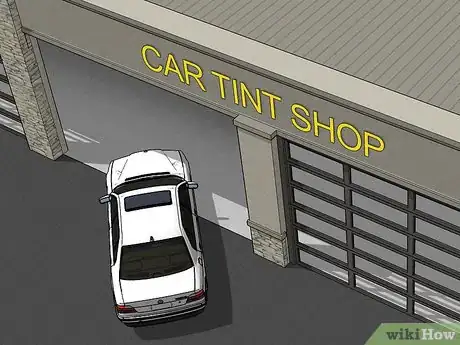

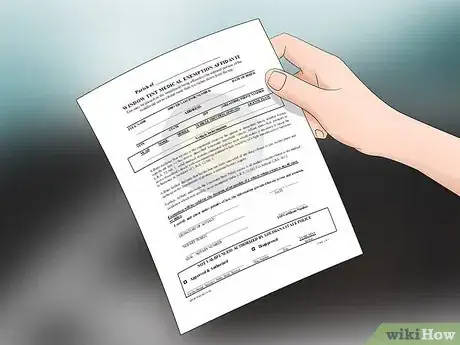
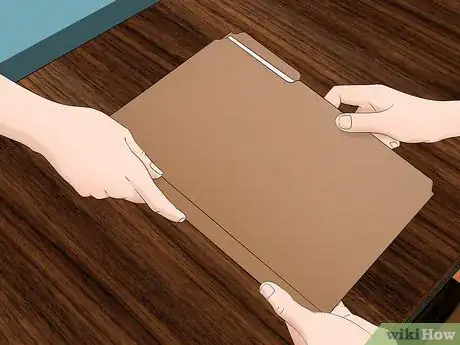
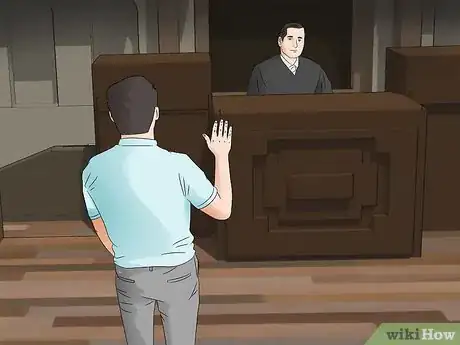
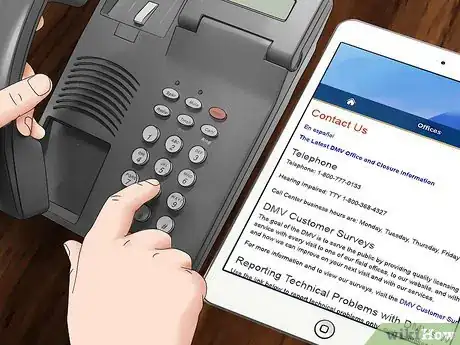
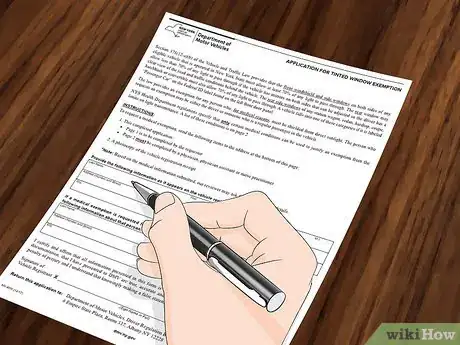
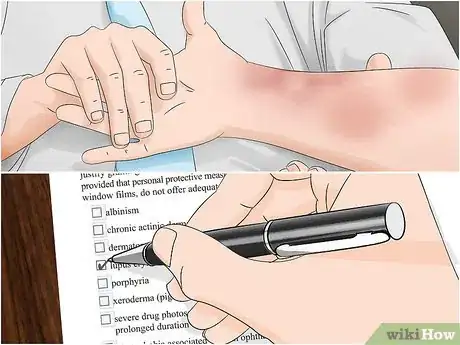
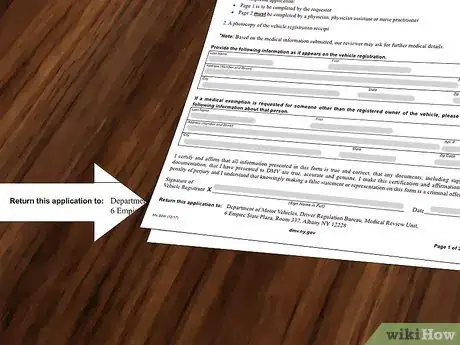
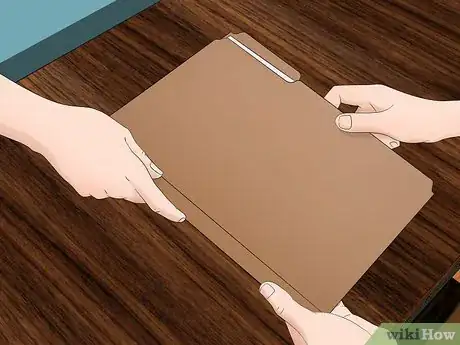
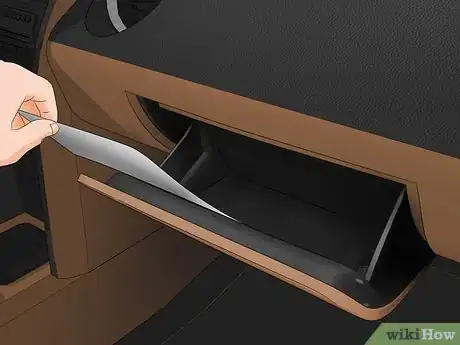
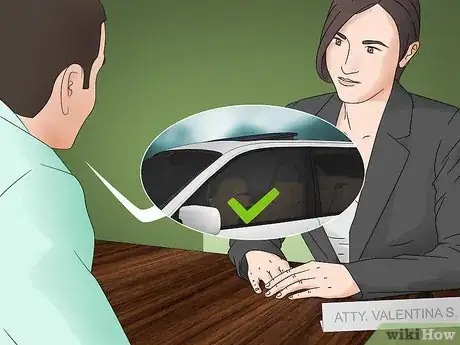
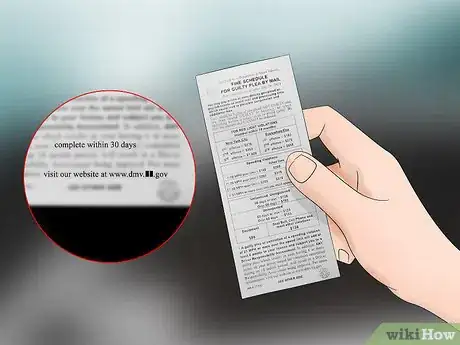
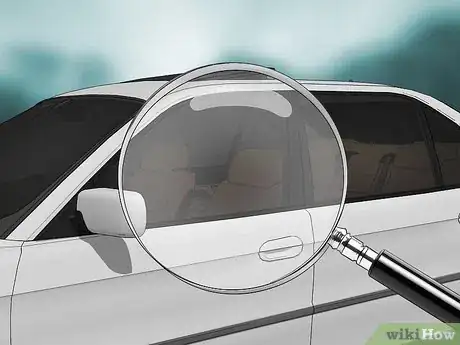

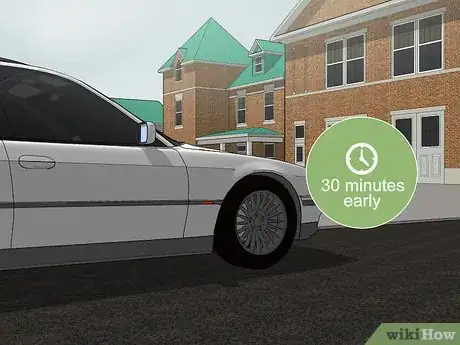
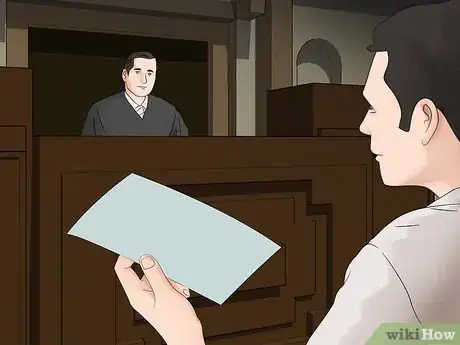
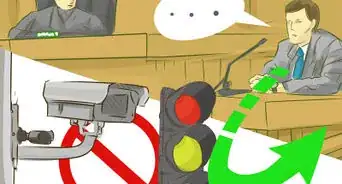
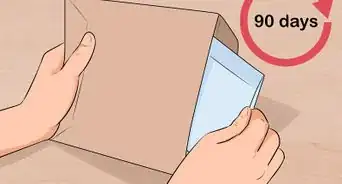



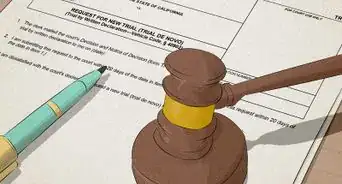
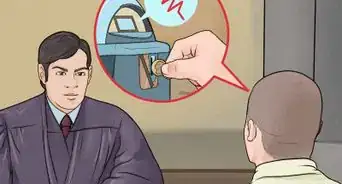

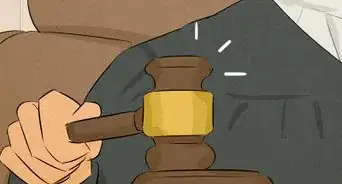
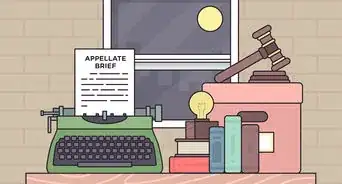
-Step-12.webp)
